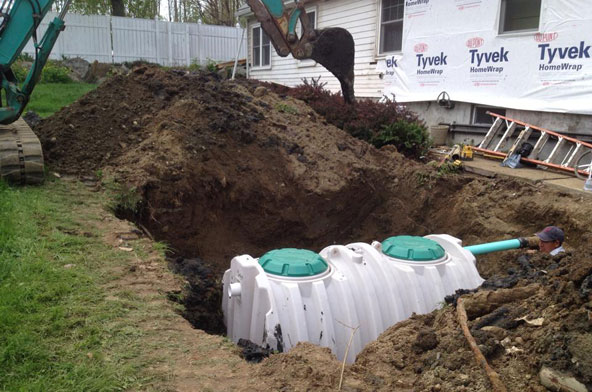Septic Installation Ultimate Guide for Homeowners
Septic installation is important for homes without city sewer access. It ensures proper waste disposal. This guide will help you understand the basics. We will cover how septic systems work, the steps involved in installation, and maintenance tips. By the end, you will know how to manage a septic system.

What is a Septic System?
A septic system is a small wastewater treatment setup. It is used in homes not connected to city sewers. It treats and disposes of household waste. The system has two main parts: a septic tank and a drain field. The tank holds the waste, and the drain field absorbs the treated water.
The tank collects all the waste from your home. Solid waste settles at the bottom. This forms sludge. Liquid waste flows to the drain field. Here, the water gets absorbed into the soil. The soil filters out harmful bacteria and nutrients. This process keeps your environment clean and healthy.
Steps Involved in Septic Installation
Installing a septic system involves several steps. Here is a simple breakdown of the process:
1. Site Evaluation: First, a professional evaluates the site. They check the soil type and groundwater level. This ensures the system will work properly. If the soil is not suitable, other options are considered.
2. System Design: After the evaluation, the system is designed. The design depends on the site and your home's needs. It includes the size of the tank and the drain field layout.
3. Permits And Approvals: Before installation, you need permits. Local authorities review the design. They ensure it meets all regulations. Once approved, you can start the installation.
4. Excavation And Installation: The site is prepared by digging. The tank and drain field are installed. The tank is placed in a hole. Pipes connect the tank to your home and the drain field. The system is covered with soil.
5. Inspection And Testing: After installation, the system is inspected. This ensures it is installed correctly. The system is tested to make sure it works. Once everything is checked, the system is ready for use.
Maintaining Your Septic System
Proper maintenance is key to a long-lasting septic system. Here are some tips to keep your system running smoothly:
1. Regular Inspections: Have your system inspected every 3 to 5 years. A professional can spot any issues early. This prevents costly repairs.
2. Pump The Tank: The septic tank needs pumping every 3 to 5 years. This removes the sludge. If not pumped, the tank can overflow. This can damage the system and your property.
3. Conserve Water: Use water wisely. Too much water can overload the system. Fix leaks and use water-saving appliances. This helps the system work efficiently.
4. Avoid Harsh Chemicals: Do not pour harsh chemicals down the drain. They can kill the helpful bacteria in the tank. These bacteria break down waste. Without them, the system can fail.
5. Protect The Drain Field: Keep the drain field clear. Do not park or build on it. Plant grass, but avoid trees and shrubs. Their roots can damage the pipes.

Signs of Septic System Problems
Knowing the signs of septic system issues can help you act quickly. Here are some common signs:
1. Slow Drains: If your sinks and tubs drain slowly, it may be a problem. This can mean the tank is full or there is a clog.
2. Bad Odors: Foul smells around your home can be a sign. This can mean the tank is full or there is a leak.
3. Standing Water: Water pooling around the drain field is a problem. This can mean the field is not absorbing water properly.
4. Lush Grass: If the grass over the drain field is very green, it can be an issue. This can mean the field is getting too much water.
If you notice any of these signs, call a professional. They can inspect the system and fix any issues.
Conclusion
Septic installation is a crucial process for homes without city sewers. It involves site evaluation, design, permits, installation, and inspection. Proper maintenance is key to a healthy system. Regular inspections, pumping, water conservation, and avoiding harsh chemicals help. Knowing the signs of problems can prevent costly repairs. With proper care, your septic system will work efficiently for years.